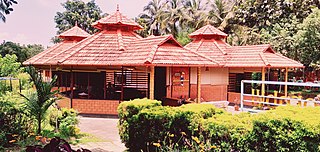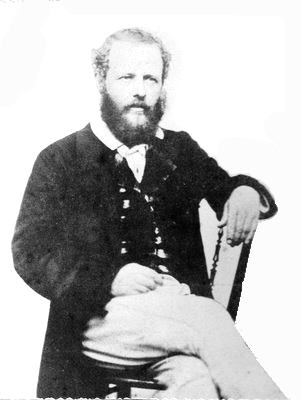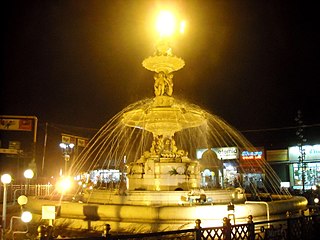
Ooty, abbreviated as Udagai) is a town and municipality in the Nilgiris district of the Indian state of Tamil Nadu. It is located 86 km (53 mi) northwest of Coimbatore, and is the headquarters of Nilgiris district. Situated in the Nilgiri hills, it is known by the epithet "Queen of Hill Stations", and is a popular tourist destination.

The Nilgiris district is one of the 38 districts in the southern Indian state of Tamil Nadu. Nilgiri is the name given to a range of mountains spread across the borders among the states of Tamil Nadu, Karnataka and Kerala. The Nilgiri Hills are part of a larger mountain chain known as the Western Ghats. Their highest point is the mountain of Doddabetta, height 2,637 m. The district is contained mainly within the Nilgiri Mountains range. The administrative headquarters is located at Ooty. The district is bounded by Coimbatore to the south, Erode to the east, and Chamarajnagar district of Karnataka and Wayanad district of Kerala to the north. As it is located at the junction of three states, namely, Tamil Nadu, Kerala, and Karnataka, significant Malayali and Kannadiga populations reside in the district. Nilgiris district is known for natural mines of Gold, which is also seen in the other parts of Nilgiri Biosphere Reserve extended in the neighbouring states of Karnataka and Kerala too.

Kotagiri is a hill station and a taluk in the Nilgiris district of the Indian state, Tamil Nadu. The Nilgiri hills have been the traditional home of the "Kota" tribes. The name 'Kota-giri' itself means 'mountains of the kotas'. Kotagiri was known in the past as 'Kota-keri' or 'Kota-gherry', the 'street of Kotas'. The town has developed around numerous knolls and valleys. It is one of the largest hill stations in the Nilgiri Mountains. Located at an average elevation of 1,950 m (6,400 ft), Kotagiri is quietly tucked away in the Nilgiris and used to be one of the summer resorts of Madras Presidency. The town was discovered in the year 1819 by John Sullivan when he came to a village called Dhimbatty to the north of Kotagiri. Kotagiri enjoys the third coldest climate next to Ooty and Kodaikanal in South India.

Coonoor, is a taluk and a municipal town of the Nilgiris district in the Indian state of Tamil Nadu. As of 2011, the town had a population of 45,494. The town sits at the south-east corner of the Nilgiri plateau, and at the head of the Coonoor Ghat, the principal pass connecting the Nilgiris to the plains. It is 363 miles by rail from Chennai and 12 miles from Ooty. The town is built within the picturesque Jackatalla valley (Jagathala), surrounded by wooded hills.

Nilambur is a major town, a municipality and a Taluk in the Malappuram district of the Indian state of Kerala. It is located close to the Nilgiris range of the Western Ghats on the banks of the Chaliyar River. This place is also known as 'Teak Town' because of the abundance of Nilambur teaks, which is a variety of a large, deciduous tree that occurs in mixed hardwood forests. Unlike many Municipalities of India; Nilambur is covered with large amounts of vegetation, making it very scenic.

The Nilgiri Mountain Railway (NMR), colloquially called the "Toy Train" by locals is a 1,000 mmmetre gauge railway in Nilgiris district, Tamil Nadu, India, built by the British in 1908. The railway is operated by the Southern Railway and is the only rack railway in India.

The Government Botanical Garden is a botanical garden in Udhagamandalam, near Coimbatore (Ooty), Tamil Nadu state, India laid out in 1848. The gardens, divided into several sections, cover an area of around 22 hectares, and lie on the lower slopes of Doddabetta peak. The garden has a terraced layout. It is maintained by the Tamil Nadu Horticulture Department.

John Sullivan was the founder of the British settlement at Ootacamund in Colonial India.

Captain Stephen Ponsonby Peacocke was a British officer of the Bombay Army and an artist notable for his 17 paintings of historic landscape views in the Nilgiri Hills in South India. Tinted lithographs were made of these views and published in imperial folio in London by the lithographer Paul Gauci in 1847. Peacocke's lithographs reflect the romantic escape to a temperate hilly area that all British people in the plains yearned for in those days. His career culminated as a member of the New Zealand Legislative Council from 1866 until his death in 1872.
The Coimbatore Diocese is one of the 24 dioceses of the Anglican Church of South India (CSI).

Southwick is a suburb in Ooty town. It is located on the NH 67 road from Ooty to Coonoor at about 3 km from the bus stand in Ooty. The suburb falls within the Ooty municipality in Tamil Nadu, India. It has derived its name from the Southwick Bungalow in the suburb.

Green fields is a suburb in Ooty town in the Tamil Nadu state of India. It constitutes ward no. 9 of the Ooty constituency of Tamil Nadu.

Ooty lake is an artificial lake near Ooty in the Nilgiris district of Tamil Nadu, India. It covers an area of 26 hectares. The boathouse on the lake is a major tourist attraction.

The Mariamman temple is located near the market in Ooty, in the state of Tamil Nadu, India. Mariamman is the local deity of the region. It is dedicated to Mariamman, the Hindu Goddess of rain.

The Kamaraj Sagar Dam is in the Nilgiris district of Tamil Nadu state in India. It is located at a distance of 10 km from the Ooty bus stand. It is a picnic spot and a film shooting spot on the slopes of the Wenlock Downs. The dam's storage capacity is 26.6 million cubic meters(MCM) or 0.94 tmc ft.

Charring cross is a junction in National Highway 67 (India) intersecting the commercial road and the Ooty-Coonoor road in Ooty, Tamil Nadu. It is considered to be one of the most important and beautiful places in Ooty. The important landmark in charring cross is the Gandhi Statue.

Adam's fountain is a public display fountain in Charring cross, Ooty. It was built in 1886 as a memorial to a Governor of Ooty, who was very famous in the region during his tenure. The total cost of finishing the fountain was between Rs. 13,000 to Rs. 14000, which was funded through public funding.
Valley View is a tourist spot in Ooty, India. It is located on the Ooty Coonoor road at a distance of 4 kilometres (2.5 mi) from Ooty bus stand and constitutes ward number 5 of the Nilgiris Lok Sabha constituency. It has views over the Ketti valley, and is an important tourist centre in Ooty. Ketti valley is sometimes referred to as the Switzerland of Southern India. The valley extends from the Mysore plateau to the Coimbatore plains and is one of the largest valleys in the world.

Summer Festival is a festival celebrated in the Nilgiri mountains of India each May. The festival is organized by the Tamil Nadu Department of Tourism and the national Ministry of Tourism. Events during the festival include cultural programmes, a Flower Show, a Rose Show, a Dog Show, a Fruit Show, a Spice Show, a Vegetable Show, a Boat Race, and Boat pageantry.
Mettupalayam railway station is an NSG–4 category Indian railway station in Salem railway division of Southern Railway zone. It is a railway station located in Mettupalayam, a suburb of Coimbatore district in the Indian state Tamil Nadu. It is one of the important railway stations located in the Coimbatore District, because the Nilgiri Mountain Railway to the hill station of Ooty starts from here. It is the connection between the metre-gauge Nilgiri Mountain Railway and the broad-gauge main network of Indian Railways. It recently celebrated its 150th anniversary.





















